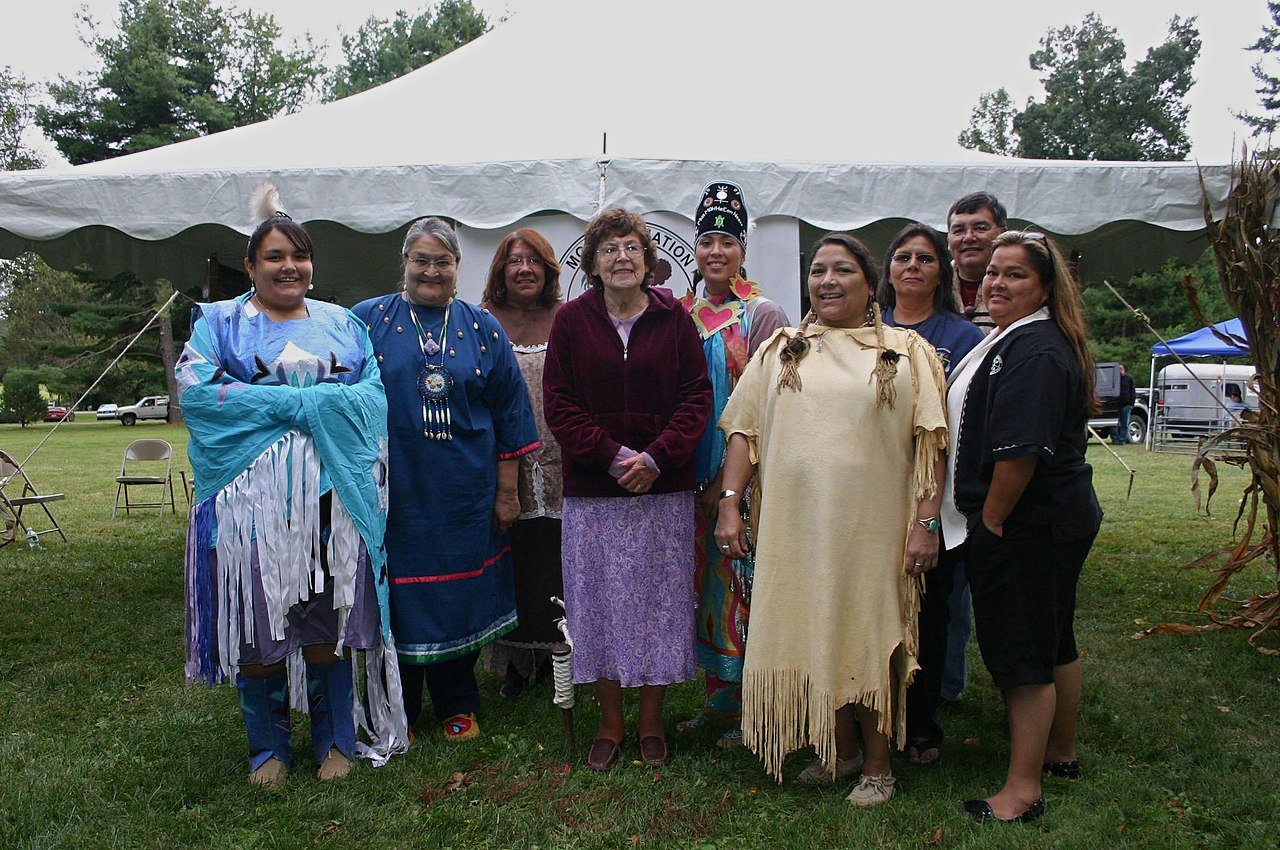The Greatest Of The American River Tribes
The Mohicans are an Eastern Algonquin Native American tribe whose territory filled much of today's Hudson River Valley, stretching as far north as Vermont as as far south as the Atlantic Ocean.

The Blood Feud Of The River Tribes
One of the great River Tribes who encountered the Europeans in the Northeastern United States, the Mohicans were one half of one of the fiercest conflicts among Native American tribes.
The People Of The Waters That Are Never Still
The Hudson River is strongly affected by tidal forces, meaning that unlike most rivers, its waters actually flow in both directions.
The Mohicans named themselves after where they lived: Muhhekunneuw means "The people of the waters that are never still".
 Albert Bierstadt, Wikimedia Commons
Albert Bierstadt, Wikimedia Commons
They Were A River Tribe
The Mohicans were distinct from many related tribes living in the Hudson Valley. These included the Munsee and the Wappinger, whom English and Dutch settlers referred to as the "River Tribes".
 DEA PICTURE LIBRARY, Getty Images
DEA PICTURE LIBRARY, Getty Images
They've Gone By Many Names
The Dutch referred to the tribe by many names: Mahigan, Mahinganak, Maikan. These eventually led to the English transliteration: Mohican.
But there were many who had more sinister names for this great River Tribe.
They Were Wolves And Snakes
The French didn't bother transliterating the Mohicans' own name for themselves: They simply called the tribe "Loups," meaning "wolves". Similarly, some rival Native American tribes referred to the Mohicans as "the Snake People".
They Were United By Language
The Mohicans traditionally spoke their own dialect of the Algonquian language, which connected them to other Algonquian tribes like the Lenape, the Munsee, and the Abenaki.
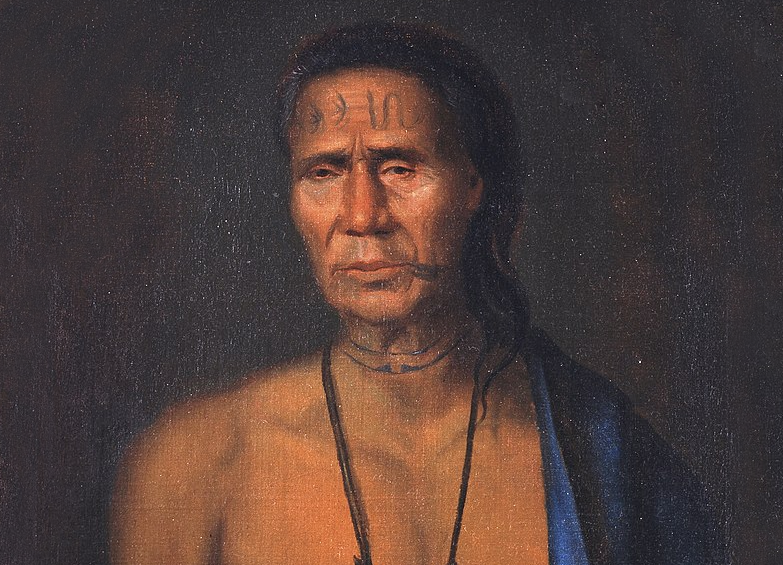 Gustavus Hesselius, Wikimedia Commons
Gustavus Hesselius, Wikimedia Commons
They Listened To Their Elders
Mohican villages followed a sachem, or chief, whose title was hereditary. The sachem, in turn, took advice from a council of clan elders.
 Twentieth Century, The Last of the Mohicans (1992)
Twentieth Century, The Last of the Mohicans (1992)
They Followed Their Mothers
Unlike Western cultures, Mohican society was matrilineal, meaning that property and inheritance were passed down through the mother's bloodline.
 Tony Johannot, CC0, Wikimedia Commons
Tony Johannot, CC0, Wikimedia Commons
Their Capital Was Today's Albany
Before there was the city of Albany, New York, at the confluence of the Mohawk and Hudson rivers, there was Pempotowwuthut-Muhhcanneuw, meaning "fireplace of the Mohican nation," the largest and most important town in Mohican territory.
 John William Hill, Wikimedia Commons
John William Hill, Wikimedia Commons
They Gathered There Every Year
When matters that pertained to the whole tribe needed discussing, a council of all the Mohican sachems would be called at Esquatak.
 Twentieth Century, The Last of the Mohicans (1992)
Twentieth Century, The Last of the Mohicans (1992)
Villages Were Familial
Through most of the year, the Mohicans were dispersed through the Upper Hudson Valley. Each individual community would largely consist of a single matrilineal lineage, though some mixing would occur.
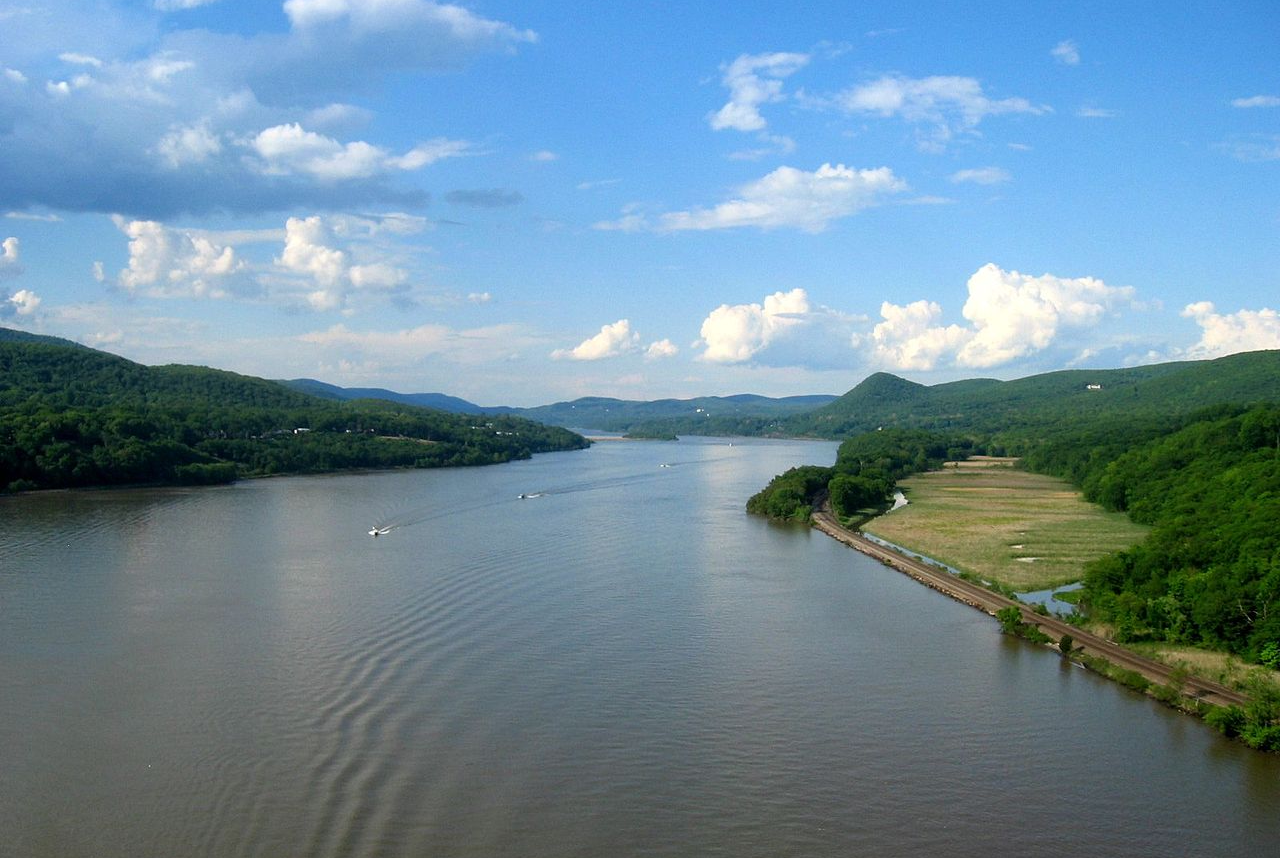 Rolf Müller, Wikimedia Commons
Rolf Müller, Wikimedia Commons
They Lived In Longhouses
Most Mohican villages consisted of a few small to mid-sized longhouses, arranged in a cluster along the floodplains of the Hudson or Mohawk rivers.
 Twentieth Century, The Last of the Mohicans (1992)
Twentieth Century, The Last of the Mohicans (1992)
Families Lived Together
These dwellings, which consisted of a single large room, would each house several families—all of whom would have been related on the mother's side.
 Twentieth Century, The Last of the Mohicans (1992)
Twentieth Century, The Last of the Mohicans (1992)
They Built Fearsome Fortifications
The Mohicans frequently found themselves needing to defend themselves, so they built impressive defensive fortifications along ridges in their territory.
In the event of an attack, they could quickly retreat to these structures to fend off the invaders.
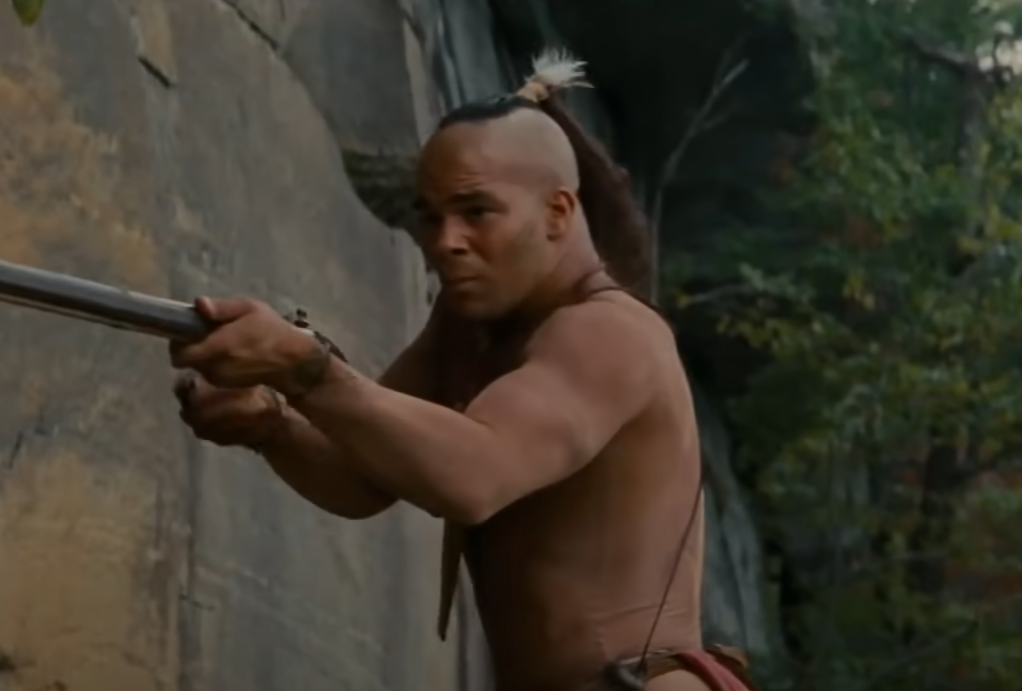 Twentieth Century, The Last of the Mohicans (1992)
Twentieth Century, The Last of the Mohicans (1992)
They Were Great Farmers
The Mohicans cultivated vast fields of corn outside of their villages, but they enjoyed a wide variety of crops. Mohican farmers, predominantly women, also grew squash, beans, sunflowers, and more crops from the Eastern Agricultural Complex.
 Twentieth Century, The Last of the Mohicans (1992)
Twentieth Century, The Last of the Mohicans (1992)
They Still Foraged Many Foods
Though they harvested a wide variety of domesticated foods, the Mohicans still supplemented their diets with a wide variety of foods foraged off the land they lived on. These included nuts, fruits, berries, and roots.
 Twentieth Century, The Last of the Mohicans (1992)
Twentieth Century, The Last of the Mohicans (1992)
Men Traditionally Hunted
Mohican men traditionally provided meat, both through hunting and fishing. Local game included turkey, deer, elk, bear, and moose, while sturgeon, bass, alewives, eels, and lamprey were common catches.
 Twentieth Century, The Last of the Mohicans (1992)
Twentieth Century, The Last of the Mohicans (1992)
The Mohican Language
The Mohicans' tumultuous history meant that their unique dialect of the Algonquian language went extinct early in the 20th century. However, renewed cultural interest in the 21st century has led to a vibrant renewal in the Indigenous language.
 Twentieth Century, The Last of the Mohicans (1992)
Twentieth Century, The Last of the Mohicans (1992)
Mohican Is Coming Back To Life
Thanks to revival efforts, for the first time in nearly a century, there are Mohican children who are learning their native tongue as their first language.
The Mohican Confederacy
During the years of European contact and conflict, the Mohican Confederacy consisted of five distinct tribes, and as many as 40 villages spread across the Hudson Valley.
 Robert Havell, Wikimedia Commons
Robert Havell, Wikimedia Commons
The True Mohicans
Though the entire confederacy shared a Mohican identity, the true Mohicans themselves were the people who lived in the region around the capital, Pempotowwuthut-Muhhcanneuw.
 Twentieth Century, The Last of the Mohicans (1992)
Twentieth Century, The Last of the Mohicans (1992)
The Mechkentowoon
The Mohican tribe that lived along the Western Hudson near the Catskill Creek called themselves the Mechkentowoon.
 John William Hill, CC0, Wikimedia Commons
John William Hill, CC0, Wikimedia Commons
The People Of The Curving Channel
The Wawyachtonoc, or people of the curving channel, lived in what is today Dutchess and Columbia counties in Upstate New York. A powerful tribe in their own right, they spread across several villages and had their own capital, Weantinock.
 Twentieth Century, The Last of the Mohicans (1992)
Twentieth Century, The Last of the Mohicans (1992)
The People On The Other Side Of The Mountains
Westenhuck, or "on the other side of the mountains," was the capital of another Mohican tribe that lived along the Housatonic River in Connecticut and Massachusetts.
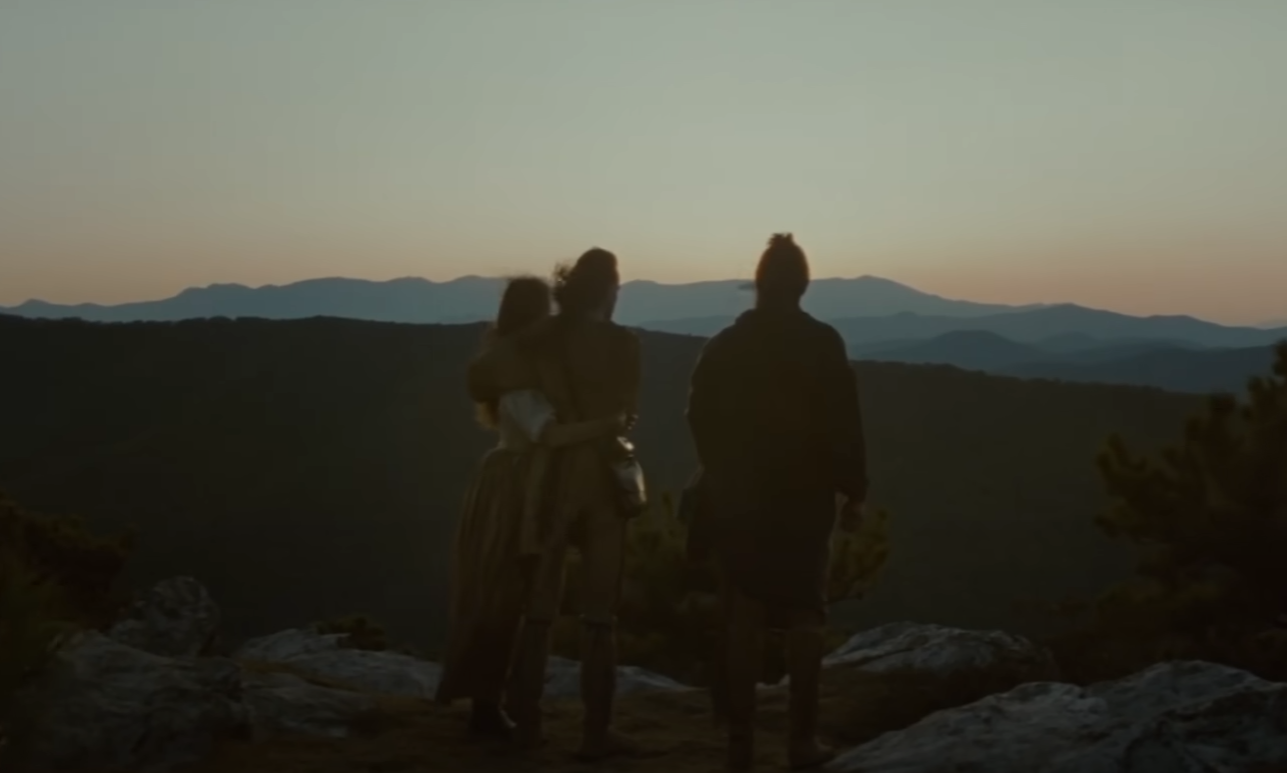 Twentieth Century, The Last of the Mohicans (1992)
Twentieth Century, The Last of the Mohicans (1992)
The People Of The Upper Reaches
The Wiekagjoc tribe lived along the eastern Hudson, near the modern-day city of Hudson, New York.
 Twentieth Century, The Last of the Mohicans (1992)
Twentieth Century, The Last of the Mohicans (1992)
The Four Clans
Early European sources wrote that the matrilineal Mohican society was also divided into four clans, dubbed the Bear, the Turkey, the Turtle, and the Wolf.
Being a member of a given clan determined what role you played in the tribe.
 Twentieth Century, The Last of the Mohicans (1992)
Twentieth Century, The Last of the Mohicans (1992)
They Had Different Roles
Members of different clans filled different roles in Mohican society. For instance, the Wolf clan served as warriors—which was something the Mohicans had plenty need of.
Because the Mohicans faced constant threat from one of the most terrifying tribes in the Hudson Valley along their northern border.
 Twentieth Century, The Last of the Mohicans (1992)
Twentieth Century, The Last of the Mohicans (1992)
They Had Blood Rivals
The Hudson River has long been a confluence of different cultures. Though the Mohicans and many of the tribes in the region were Algonquian, the Mohawk, whose territory stretched from Lake Ontario across New York, represented the easternmost members of the Iroquois Confederacy.
Along the border of Mohican and Mohawk territory, this meant violence.
 Twentieth Century, The Last of the Mohicans (1992)
Twentieth Century, The Last of the Mohicans (1992)
They Fought Even Without The Europeans
Early Jesuit missionaries who interacted with both the Mohican and Mohawk heard stories of a war between the two rival tribes in the years leading up to European colonization.
And it was only going to get worse once the newcomers got involved...
 Twentieth Century, The Last of the Mohicans (1992)
Twentieth Century, The Last of the Mohicans (1992)
They Entered The Fur Trade
Henry Hudson first encountered the Mohicans in 1609. He was immediately attracted to the furs their hunters gathered. He traded for furs, which then caused such a stir back in Europe that soon the Hudson Valley was flooded with Dutch merchants looking to get in on the action.
The Mohicans had unfortunately made a deal with the devil.
 Neemster, CC BY-SA 3.0, Wikimedia Commons
Neemster, CC BY-SA 3.0, Wikimedia Commons
They Got Into Business
Dutch merchants were desperate for Native American furs, and the many tribes in the region were desperate for things like metal goods that only the Europeans could provide. Soon, the Mohicans were in frequent contact with Dutch fur traders—and it came at a terrible cost.
 William Faden, Wikimedia Commons
William Faden, Wikimedia Commons
They Started Getting Sick
The Europeans brought new diseases that the Mohicans and the other tribes had no resistance to whatsoever. Epidemics began to decimate their numbers—but that was only one way that the fur trade harmed the Mohicans in the long run.
The Mohawk were a problem for the Mohicans before, and the fur trade was going to make it so much worse.
 Henry Alexander Ogden (Harry Ogden), Wikimedia Commons
Henry Alexander Ogden (Harry Ogden), Wikimedia Commons
They Competed With Each Other
The metal goods provided by the Europeans were a complete cultural shift for all the tribes in the Hudson Valley. For the Mohicans and the Mohawk, this led to fierce and often violent competition. It got so bad, even the Dutch tried to step in...
 Twentieth Century, The Last of the Mohicans (1992)
Twentieth Century, The Last of the Mohicans (1992)
The Dutch Set Up Shop
By 1614, the Dutch were ready to set up a permanent trading post on Castle Island, not far from the Mohican capital. But before they could do that, they knew they had to do something about the fighting between the Mohawk and the Mohicans.
The Europeans brokered a truce and founded Fort Nassau—but it wouldn't last long.
 Massachusetts Magazine, Wikimedia Commons
Massachusetts Magazine, Wikimedia Commons
Their Fort Was Swept Away
The delicate truce between the Mohicans and the Mohawks only lasted a couple of years before the chaos broke out once more. The Dutch were already struggling to do good business when, in 1617, flooding badly damaged Fort Nassau.
 Twentieth Century, The Last of the Mohicans (1992)
Twentieth Century, The Last of the Mohicans (1992)
They Gave Up
Enough was enough. The Dutch abandoned Fort Nassau entirely—but they weren't giving up on this exciting new venture. They'd be back eventually, but the rivalry between the Mohicans and Mohawks was going to get a lot worse before it got any better.
 John Frederick Kensett, CC0, Wikimedia Commons
John Frederick Kensett, CC0, Wikimedia Commons
The Dutch Set Up Fort Orange
The Dutch didn't manage to build a successful colony in the region until 1624, when 18 Dutch families founded Fort Orange on the mainland overlooking Castle Island.
Of course, their arrival would spell the Mohicans' eventual doom, but in the moment, it provided an opportunity. And they took it.
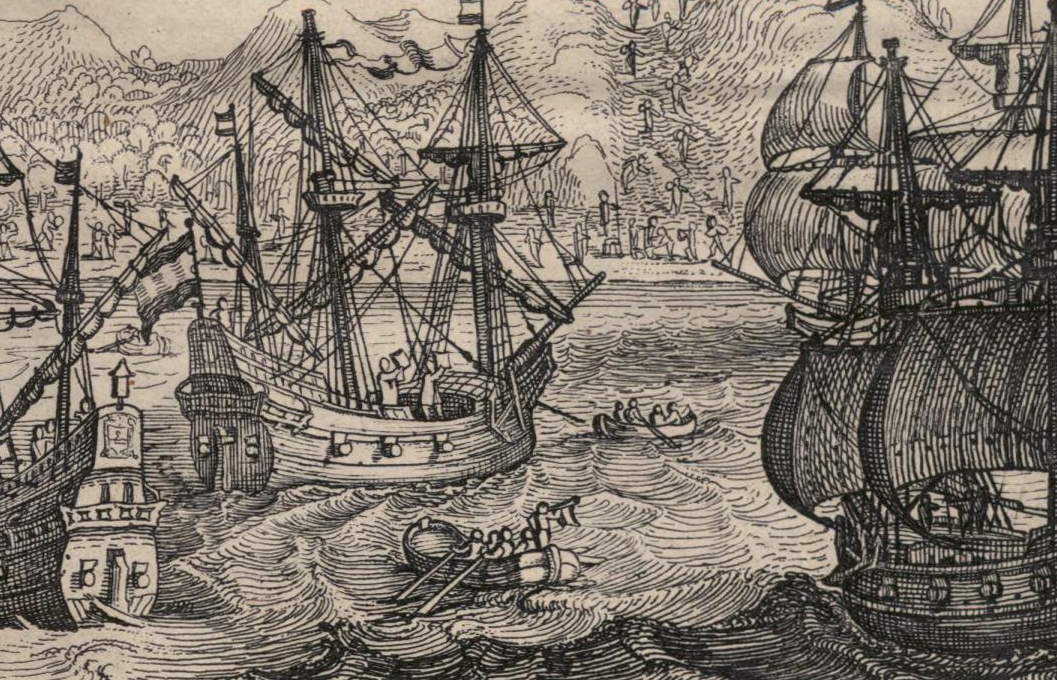 Chartered West India Company, Wikimedia Commons
Chartered West India Company, Wikimedia Commons
They Gained Influence
The Mohicans soon began inviting Algonquian tribes from further north down to their territory to trade with the Dutch at Fort Orange. Their proximity to the Europeans and their goods meant that the Mohicans cultural status grew. They began to exert influence on other tribes in the region—and the Mohawk did not like that one bit.
 National Archives at College Park, Wikimedia Commons
National Archives at College Park, Wikimedia Commons
The Mohawk Attacked
The Mohawk saw the increased influence of the Mohicans as a threat, and they didn't want to wait around to see what happens next. They struck first, attacking Mohican territory and pushing them onto their heels.
But the Mohicans knew how to fight back.
 Twentieth Century, The Last of the Mohicans (1992)
Twentieth Century, The Last of the Mohicans (1992)
They Fought Back
The Mohawk had been encroaching further and further east for years, and after the latest attacks, the Mohicans decided to put a stop to it. They attacked and razed the easternmost Mohawk fortification—but their problems were far from over.
 Twentieth Century, The Last of the Mohicans (1992)
Twentieth Century, The Last of the Mohicans (1992)
The Mohawk Weren't Going Anywhere
After the Mohican counterattack, the Mohawk resettled on lands south of the Mohawk River, within spitting distance of Fort Orange. What started as a mere Dutch trading post was suddenly becoming a warzone...
 Twentieth Century, The Last of the Mohicans (1992)
Twentieth Century, The Last of the Mohicans (1992)
Dutch Settlers Fled The Fighting
The fighting between the Mohawk and the Mohicans was so constant that soon, many Dutch settlers began abandoning Fort Orange for the much more peaceful settlement of New Amsterdam near the river's mouth.
But while some of the Dutch ran away, others got involved.
 Allard, H & Ottens, R & J, Wikimedia Commons
Allard, H & Ottens, R & J, Wikimedia Commons
The Mohicans Asked For Help
The Mohicans, who had considered the confluence of the two rivers their home for generations, went to the Dutch for help repelling the encroaching Mohawk. The Dutch Commander Daniel Van Krieckebeek personally led a contingent of six soldiers out of Fort Orange to aid in a counterattack.
They didn't realize they were all walking into a trap.
 Twentieth Century, The Last of the Mohicans (1992)
Twentieth Century, The Last of the Mohicans (1992)
They Were Ambushed
A Mohican fighting force left Fort Orange along with Van Krieckebeek and his men, but everything went so wrong, so fast. They were set upon by the Mohawk about a mile outside of the fort—and the aftermath was horrific.
 Twentieth Century, The Last of the Mohicans (1992)
Twentieth Century, The Last of the Mohicans (1992)
They Were Slaughtered
By the time the slaughter ended, Van Krieckebeek, three of his men, and 24 Mohicans lay dead. But that wasn't enough of a victory for the Mohawks. Before leaving the battlefield, some Mohawk warriors removed body parts from some of the people they had slain.
As if that wasn't bad enough, they had an even more gruesome purpose.
 Snowfort Pictures, Mohawk (2017)
Snowfort Pictures, Mohawk (2017)
They Were Eaten
Those body parts were bound for a Mohawk warrior's stomach. As a show of supremacy and humiliation, Mohawk would ritually eat the flesh of the people they had slain.
 Snowfort Pictures, Mohawk (2017)
Snowfort Pictures, Mohawk (2017)
The Beaver Wars
The conflicts that arose from the introduction of the European fur trade are called the Beaver Wars. Fought between the Iroquois and the Algonquians, the Hurons, and the French, they lasted nearly a century—though the Iroquois eventually proved themselves the victors.
 George Catlin, CC0, Wikimedia Commons
George Catlin, CC0, Wikimedia Commons
Their Enemies Were Too Vicious
Throughout the Beaver Wars, the Mohicans kept finding themselves on the losing side against the vicious Mohawk. By 1629, the Mohawk had claimed the territory along the Western bank of the Hudson that had long been Mohican land.
 Charles William Jefferys, Wikimedia Commons
Charles William Jefferys, Wikimedia Commons
They Had To Retreat
Faced with constant attack from the Mohawk, most Mohicans began to migrate east, away from their homeland and into western Massachusetts and Connecticut.
 William Halsall, Wikimedia Commons
William Halsall, Wikimedia Commons
They Couldn't Join The Fur Trade
The Mohawks didn't just take the Mohicans' land. They also barred any Algonquian speakers from trading with the Dutch. But the Mohicans found a way to soldier on.
 Unknown Author, Wikimedia Commons
Unknown Author, Wikimedia Commons
They Settled In Massachusetts
A large contingent of Mohicans settled in Stockbridge, Massachusetts, where the Europeans began referring to them as the "Stockbridge Indians". A chief of this tribe, Etow Oh Koam, eventually traveled across the Atlantic to meet Queen Anne of Great Britain—but the voyage must have been humiliating.
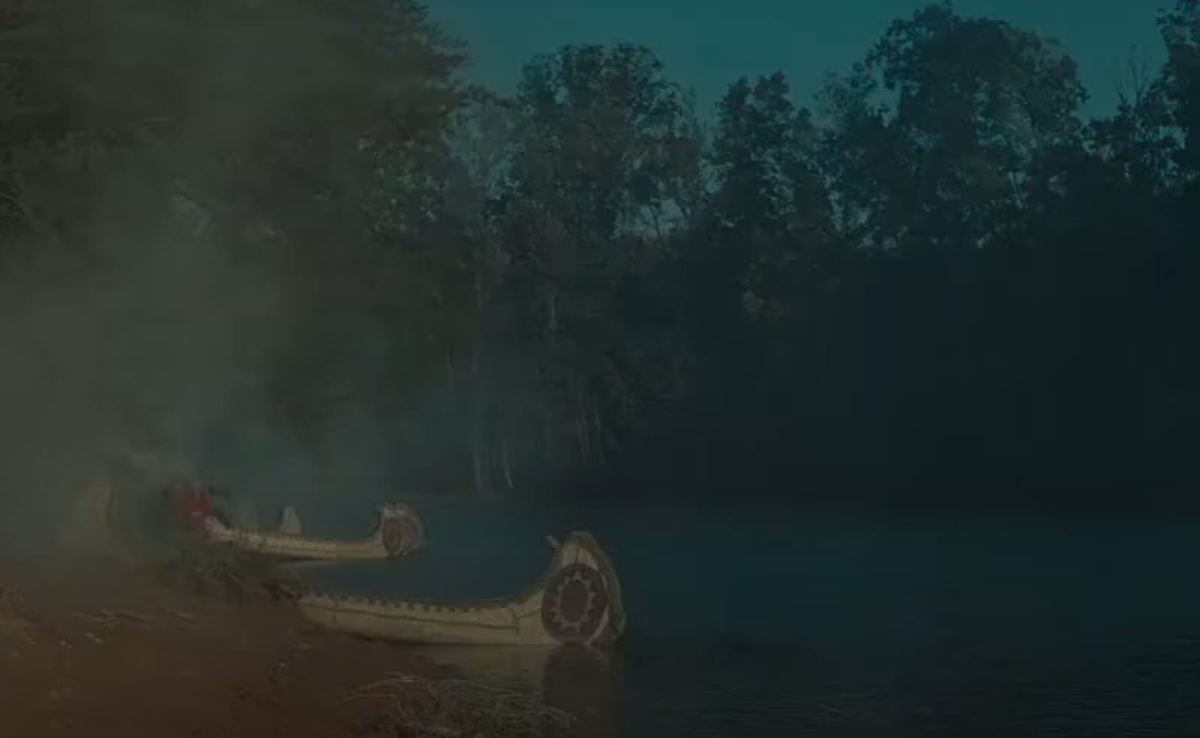 Twentieth Century, The Last of the Mohicans (1992)
Twentieth Century, The Last of the Mohicans (1992)
He Travelled With The Enemy
Etow Oh Koam was just one of four Native American chiefs who met Queen Anne. The other three were from his tribe's mortal enemy, the Mohawk.
Even worse, the group was collectively referred to as "The Four Mohawk Kings," erasing Etow Oh Koam's Mohican heritage.
 John (Johannes) Verelst, Wikimedia Commons
John (Johannes) Verelst, Wikimedia Commons
They Began Assimilating
The Mohicans in Stockbridge began allowing Protestant missionaries to live among them, including world-famous preacher and philosopher Jonathan Edwards. By the 18th century, many Mohicans converted to Christianity, though they integrated many of their own traditions into their faith.
 Princeton University, Wikimedia Commons
Princeton University, Wikimedia Commons
They Worked With The Europeans
The Stockbridge Mohicans maintained a close relationship with the European settlers, fighting alongside the British in the French and Indian War, then siding with the colonists during the American Revolution.
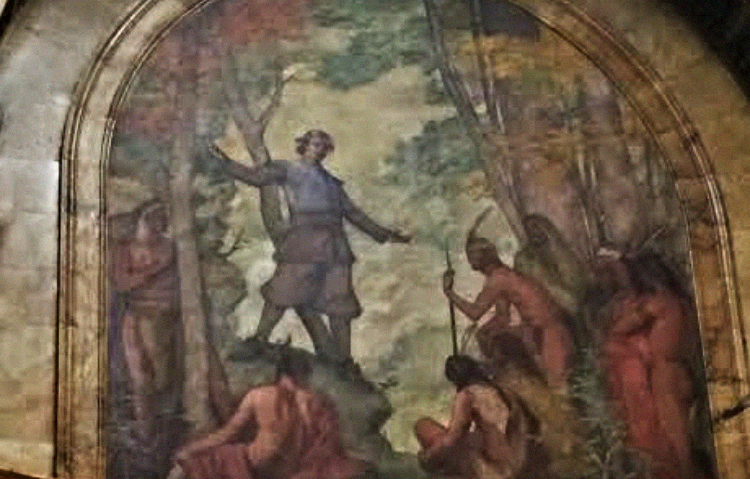 Dajnez, CC BY-SA 4.0, Wikimedia Commons
Dajnez, CC BY-SA 4.0, Wikimedia Commons
They Embraced The Moravian Church
The Moravian Church is a denomination of Protestantism that dates back to even before the days of Martin Luther. Moravian missionaries established ties with the Stockbridge Mohicans.
Sadly, the Mohicans were facing difficult times, and they were seeking guidance.
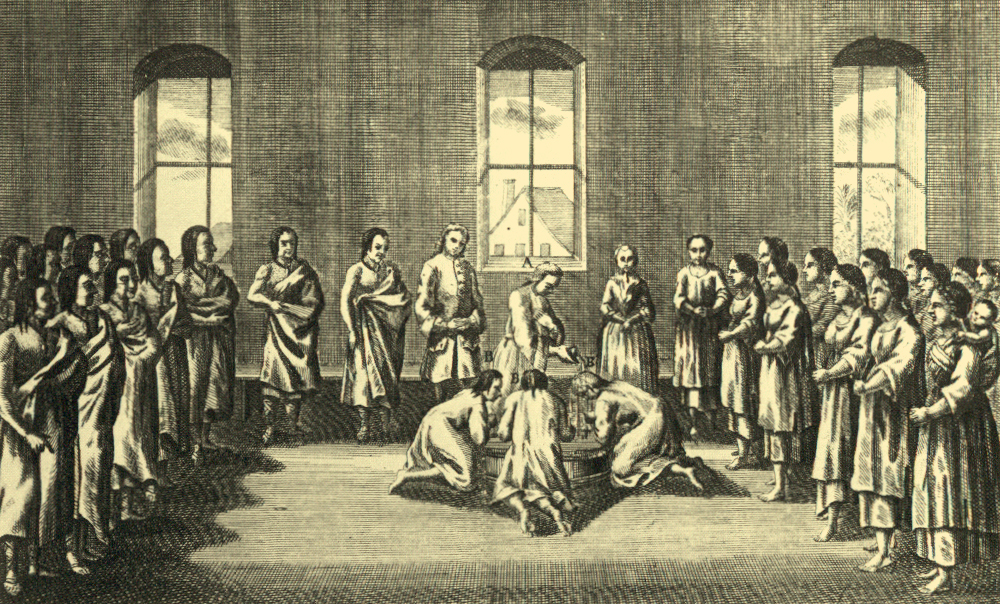 Yale Center for British Art, Wikimedia Commons
Yale Center for British Art, Wikimedia Commons
They Were Suffering
The Stockbridge Mohicans had long suffered from disease and conflict. The Moravian missionary Henry Rauch's message reached many of their ranks, and the first Mohican Moravian chapel was built in 1742.
 WindingRoad, CC BY-SA 4.0, Wikimedia Commons
WindingRoad, CC BY-SA 4.0, Wikimedia Commons
The Moravians Fought For Them
The members of the Moravian mission fought for their new Mohican followers, as their fellow Europeans continually encroached on Mohican land and exposed them to vices like alcohol. But European influence couldn't be stopped.
 John Valentine Haidt, Wikimedia Commons
John Valentine Haidt, Wikimedia Commons
They Paid For It
When the colonists came for the Stockbridge Mohicans' land, the Moravian missionaries advocated for them fiercely—and they paid for it.
When the European colonists inevitably took over the Mohicans' land, they also expelled the Moravian missionaries from New York in retaliation.
 Johannes Vingboons, Wikimedia Commons
Johannes Vingboons, Wikimedia Commons
The Connection Remains
The Moravian Church remains alive today largely through the many missions it established during the Age of Colonization. Though the majority of Moravians today live in Africa, the Mohican Nation Stockbridge–Munsee Band today are still adherents to the Moravian Church.
 Mo Laidlaw, CC BY-SA 3.0, Wikimedia Commons
Mo Laidlaw, CC BY-SA 3.0, Wikimedia Commons
They Sided With America
While Joseph Brant and the Iroquois would lose their lands if the American Revolution was successful, and thus sided with the British, the Mohicans already had a long-established relationship with said colonists, so they sided with the Patriots.
 Archibald Willard, Wikimedia Commons
Archibald Willard, Wikimedia Commons
They Paid For It
In 1778, the Stockbridge Mohicans lost 40 warriors in a British attack, which was half of their already-dwindling numbers. And when the fighting stopped, with America victorious, how were they rewarded?
 Johann von Ewald, Wikimedia Commons
Johann von Ewald, Wikimedia Commons
They Had To Move
After fighting for the colonists in the revolution, the Mohicans, like many other tribes in the region, were forced westward. The Stockbridge Mohicans had to settle in central New York, among the Oneida people, who had been granted a 300,000-acre reservation for fighting for the Americans.
 Regal Films, The Deerslayer (1957)
Regal Films, The Deerslayer (1957)
They Had To Move Again
The Mohicans at New Stockbridge tried to maintain and grow their culture, but the growth of the United States forced them to move once more—and this time, it was a much longer trip.
In the early 19th century, most Stockbridge Mohicans were resettled in Shawano County, Wisconsin under the US's policy of Indian Removal.
 Regal Films, The Deerslayer (1957)
Regal Films, The Deerslayer (1957)
They Had Familiar Neighbors
The Munsee tribe of the Lenape, another Algonquian speaking group, joined together with the Mohicans in Wisconsin, forming the Stockbridge-Munsee Community that persists in Wisconsin to this day.
They're Trying To Get Their Land Back
The Mohicans are quite literally the people of the Hudson River, and after nearly two centuries in Wisconsin, Mohican leaders have begun filing land claims against New York, and they have seen some success.
 Schick Sunn Classics, Last of the Mohicans (1977)
Schick Sunn Classics, Last of the Mohicans (1977)
They Returned To The Hudson
In 2011, the Stockbridge-Munsee Community Band of the Mohican Indians reclaimed their ownership of 156 acres of land along the Hudson River in Rensselaer County, New York, near the site of their capital of Pempotowwuthut-Muhhcanneuw.
 Famartin, CC BY-SA 4.0, Wikimedia Commons
Famartin, CC BY-SA 4.0, Wikimedia Commons
They Reclaimed An Important Site
Part of the land that the Mohicans reclaimed was Papscanee Island, an important ceremonial site before a Dutch merchant purchased it in 1637.
They Became Famous In Literature
The Mohican were immortalized in literature with James Fenimore Cooper's novel The Last of the Mohicans. Though the novel is centered on the Mohican tribe and is set in the Hudson Valley, it's not exactly the powerful cultural tribute that people might think.
He Didn't Really Know Them
James Fenimore Cooper actually based the Native Americans in his novel on the Mohegan tribe, a distinct Algonquian group that lived in Connecticut. Any speaker of Mohican would quickly realize that many of the names in the novel, like Uncas, are Mohegan, not Mohican.
 Mathew Benjamin Brady, Wikimedia Commons
Mathew Benjamin Brady, Wikimedia Commons
Very Few Remain
Today, only around 3,000 members of the Mohican tribe remain, mostly in Wisconsin.
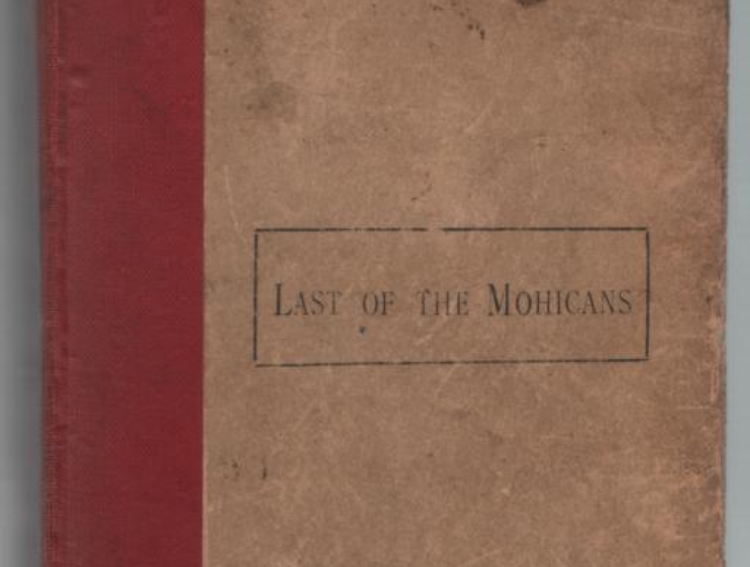 Standard Authors Publishing Co., Wikimedia Commons
Standard Authors Publishing Co., Wikimedia Commons
Under The Bridge
Anthony Kiedis, lead singer of the Red Hot Chili Peppers, has Mohican blood through his grandmother Molly VanderVeen. The family initially thought Molly was English, French, Irish, and Dutch, before discovering her Mohican heritage.
Just goes to show the connection between the Mohicans and the Dutch colonists in the early days of European contact is still evident today.
 Hel Davies, CC BY-SA 2.0, Wikimedia Commons
Hel Davies, CC BY-SA 2.0, Wikimedia Commons






